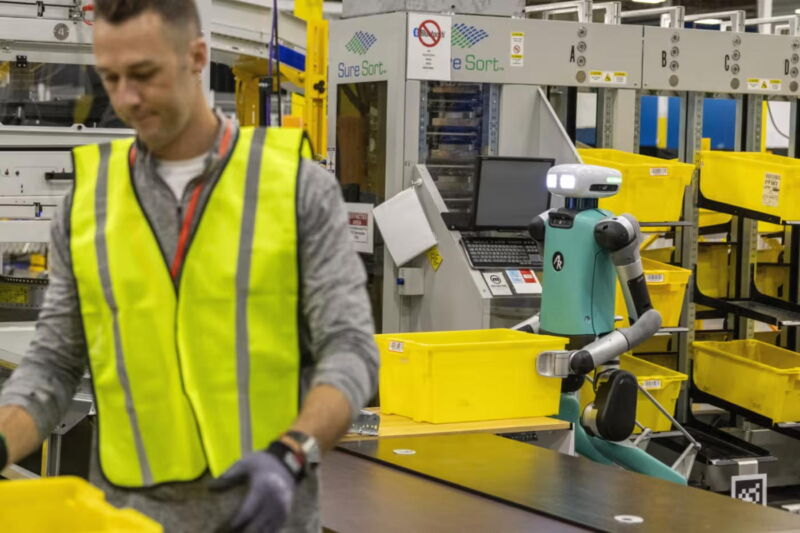
Financial Times
Amazon’s $1 billion industrial innovation fund is to step up investments in companies that combine artificial intelligence and robotics, as the ecommerce giant seeks to drive efficiencies across its logistics network.
Franziska Bossart, head of the corporate venture capital arm that was set up in 2022, told the Financial Times that “generative AI holds a lot of promise for robotics and automation” and is an area “we are going to focus on this year.”
She added that the fund’s pace of investment would “absolutely” accelerate in 2024. It made its first investment in a generative AI company last year, the details of which have not been disclosed.
The Amazon industrial innovation fund has made 12 investments in total, including in Mantis Robotics, which is developing a robotic arm that uses sensors to work alongside humans.
The fund’s search for new investments in generative AI groups comes as Big Tech companies pour billions into developing the technology, which can produce humanlike text, images, and code in seconds.
Microsoft has committed up to $13 billion to OpenAI, incorporating the ChatGPT-maker’s technology into its Office suite of productivity apps and Bing search engine. On Monday, Microsoft announced it has made an investment in French AI startup Mistral. Separate from its innovation fund, Amazon has committed up to $4 billion to generative AI start-up Anthropic.
Amazon has innovated in robotics before: in 2022, the company said it had invested more than 400 million euros in technologies that include industrial robotics and sorting systems in its European warehouses. It has deployed 750,000 mobile robots across its operations network.
The industrial innovation fund is seeking to invest in start-ups that can support the ecommerce group’s aims of becoming “more efficient, safer for our associates, and increase the speed of delivery to our customers.” Bossart said.
She said the Amazon fund would expand its focus this year, including by seeking to invest in companies involved in the “last mile” of deliveries, when packages arrive with customers, as well as geographically and in later-stage companies. However, Bossart would not be drawn on how much the fund has deployed so far, declining to comment on a report it has invested $110 million as of June.
The focus on the automation of warehouses and logistics was not about cutting people out of them altogether, but would result in a “shift in jobs” as more robots and automated vehicles took on repetitive or dangerous tasks, she said. “We’re also a long way off from replacing all humans,” she added.
While Amazon’s push to use AI to increase automation may raise concerns among the company’s thousands of delivery and warehouse workers worldwide, the declaration that its investment arm will deploy more capital this year may cheer tech start-ups.
Venture capitalists have resisted new bets on fledgling companies during a recent tech downturn and have instead focused on propping up existing companies in their portfolio or groups that can demonstrate profitability.
Amazon’s desire for greater automation and efficiency across its warehouses and supply chain is also part of a broader strategy to boost margins following a period of heavy investment in the logistics network during the pandemic.
A recent effort to “regionalize” the US network—which involved restructuring the national parcel packing, sorting, and delivery hubs, as well as its transport fleet, into eight regional networks—meant goods could be stored closer to customers, making deliveries quicker and cheaper, Amazon said in February.
But there were still areas “where we believe we can lower costs while also delivering faster for customers.” said chief executive Andy Jassy.
© 2024 The Financial Times Ltd. All rights reserved. Not to be redistributed, copied, or modified in any way.

